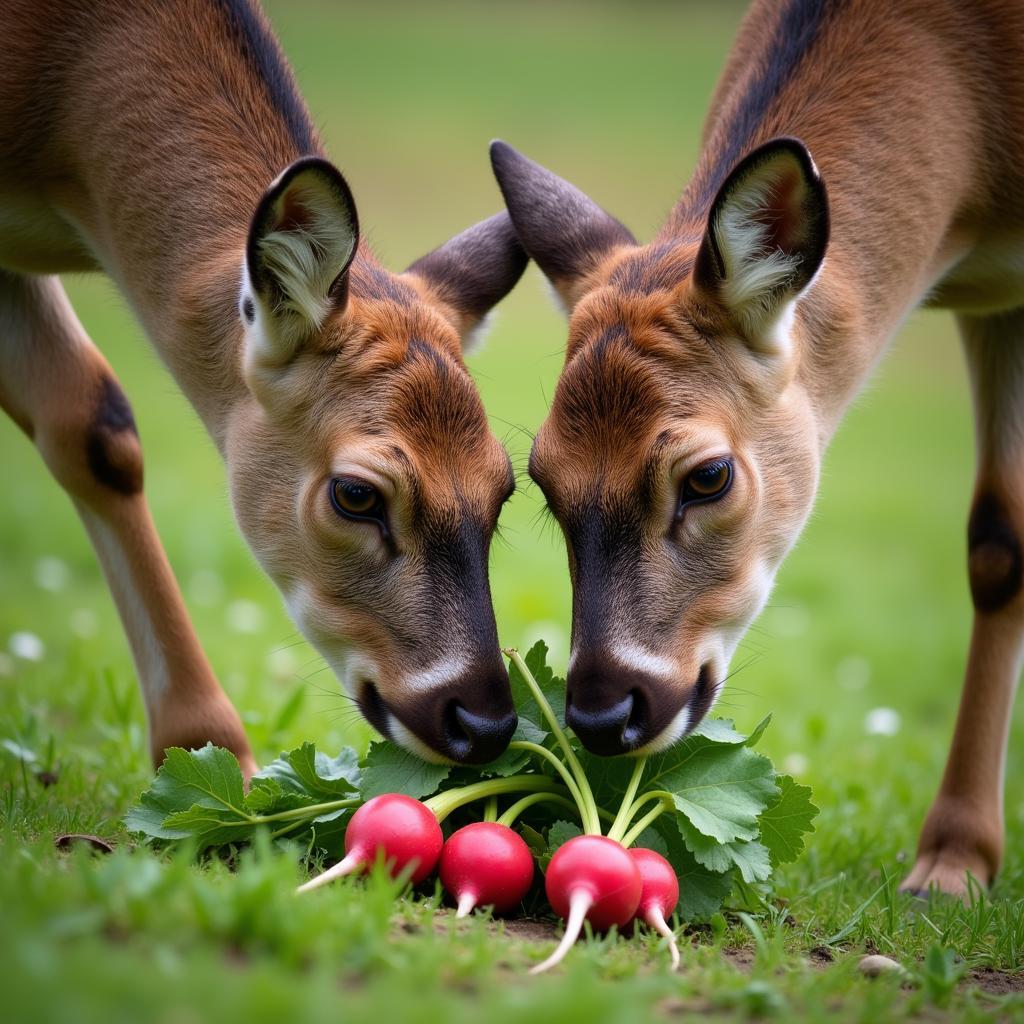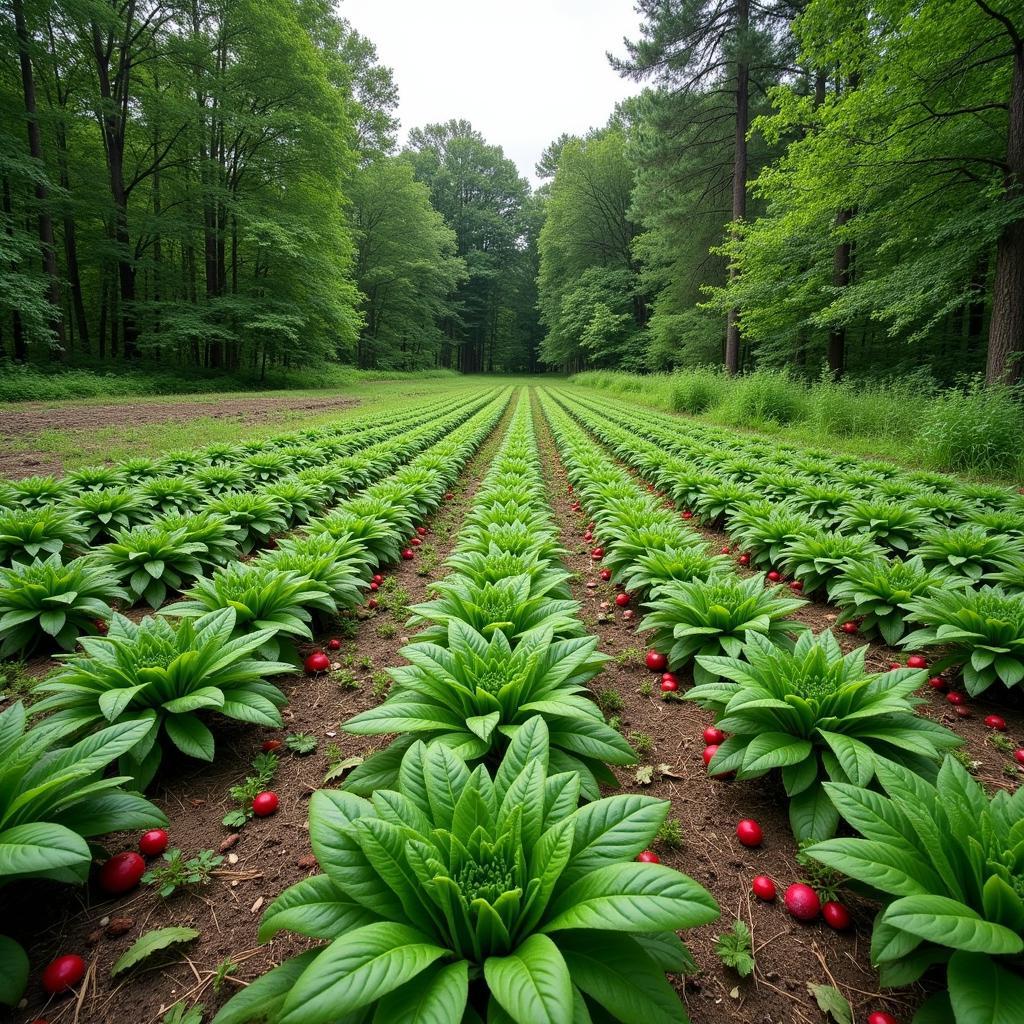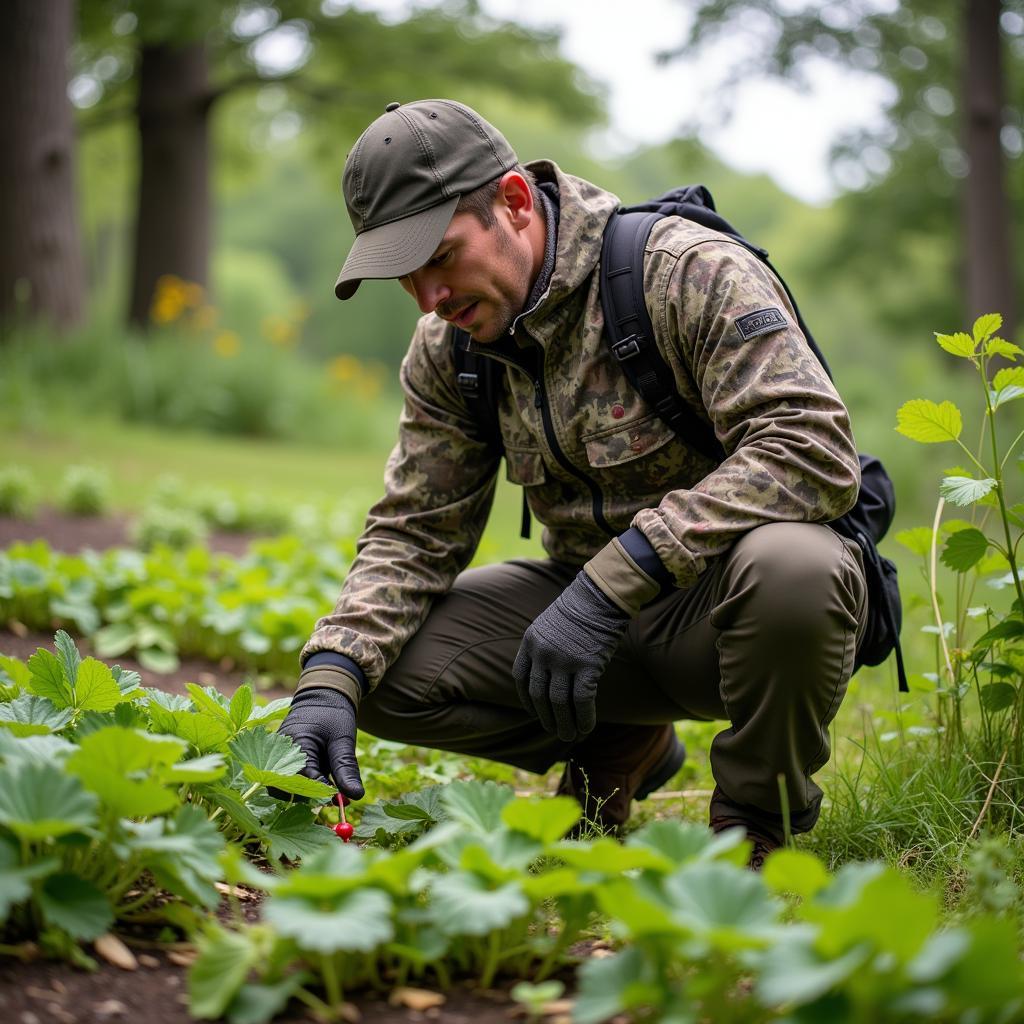Deer Food Plot Radishes have quickly gained popularity among hunters and wildlife enthusiasts seeking to attract and hold deer on their property. But what exactly are these super-sized root vegetables, and what makes them so irresistible to whitetails?
This comprehensive guide delves deep into the world of deer food plot radishes, exploring their benefits, planting strategies, and tips for successful implementation. Whether you’re a seasoned hunter or a newcomer to the world of food plots, this article will provide you with the knowledge and resources you need to create a thriving radish plot that deer can’t resist.
Why Plant Radishes for Deer?
Unlike traditional food plot options like clover or alfalfa, which primarily focus on above-ground foliage, radishes offer a unique two-pronged benefit for both deer and the soil they inhabit. Let’s break down the advantages:
1. Highly Palatable and Nutritious:
Deer are naturally drawn to the large, succulent taproots of radishes, especially during the fall and winter months when other food sources become scarce. These roots are packed with essential nutrients, carbohydrates, and moisture, providing valuable energy and sustenance for deer throughout the colder seasons.
2. Soil Health Superheroes:
Beyond their nutritional value, radishes act as natural soil conditioners, improving its structure and overall health. Their deep taproots penetrate compacted soil, creating channels for air and water to circulate more effectively. This enhanced drainage and aeration promote beneficial microbial activity, leading to healthier soil that can support more robust plant growth in the future.
 Deer Enjoying Radishes in Food Plot
Deer Enjoying Radishes in Food Plot
Choosing the Right Radish Variety for Deer
Not all radishes are created equal when it comes to deer food plots. Selecting the right variety is crucial for optimal growth and attraction. Here are a few popular choices known for their appeal to deer:
- Daikon Radishes: These radishes are renowned for their massive size, often reaching depths of 18 inches or more. Their large, palatable roots provide a substantial food source for deer.
- Oilseed Radishes: As the name suggests, oilseed radishes are valued for their oil content, making them highly attractive to deer seeking high-energy food. They also mature quickly, making them a suitable choice for late-summer plantings.
- Forage Radishes: This category encompasses various radish types bred specifically for their forage quality. They often exhibit desirable traits like rapid growth, cold tolerance, and high palatability.
Planting and Maintaining Your Deer Food Plot Radishes
Timing is everything when it comes to planting radishes for deer. Aim to sow your seeds approximately 6-8 weeks before the first frost in your region. This timeframe allows the radishes to establish strong root systems before winter sets in, ensuring an ample food supply for deer during the colder months.
Planting Tips:
- Soil Preparation: Radishes thrive in well-drained soil. Before planting, loosen the soil using a tiller or disc harrow to a depth of 6-8 inches. Remove any large rocks or debris.
- Planting Depth: Sow radish seeds about 1/2 to 1 inch deep.
- Spacing: For optimal growth, space rows 12-18 inches apart.
- Fertilization: Consider a light application of nitrogen-rich fertilizer at planting time to encourage vigorous growth.
- Watering: While radishes are relatively drought-tolerant, consistent moisture during the early stages of growth is beneficial.
 Thriving Deer Food Plot with Radishes
Thriving Deer Food Plot with Radishes
Maintenance:
Once established, deer food plot radishes require minimal maintenance. However, keep an eye out for weeds, especially during the early stages of growth.
Frequently Asked Questions about Deer Food Plot Radishes
Q: Will deer eat radishes?
A: Absolutely! Deer find the large, nutrient-rich taproots of radishes to be highly palatable, especially during the fall and winter months.
Q: When is the best time to plant radishes for deer?
A: Plant radish seeds approximately 6-8 weeks before the first frost in your area.
Q: How deep should I plant radish seeds?
A: Sow radish seeds about 1/2 to 1 inch deep.
Q: What type of soil is best for growing radishes?
A: Radishes prefer well-drained soil.
Q: How much maintenance do deer food plot radishes require?
A: Once established, radishes require minimal upkeep. However, it’s important to control weeds, especially during the early stages of growth.
Q: Can I plant other crops with my radishes?
A: Yes, you can consider planting radishes alongside other deer-attracting crops like winter wheat or oats.
Q: What are the benefits of planting radishes for deer?
A: Radishes provide a highly palatable and nutritious food source for deer, especially during the winter. They also improve soil health by aerating compacted soil and adding organic matter.
 Hunter Inspecting Radishes in Food Plot
Hunter Inspecting Radishes in Food Plot
Conclusion: Reap the Rewards of a Thriving Deer Food Plot
Deer food plot radishes are a game-changer for attracting and sustaining healthy deer populations. By incorporating these powerful root vegetables into your land management strategy, you can provide a valuable food source, enhance soil health, and ultimately enjoy the rewards of a thriving wildlife habitat.
If you need assistance with your food plot or have any questions, please contact us at Phone Number: 02437655121, Email: [email protected]. Or visit us at 3PGH+8R9, ĐT70A, Trung Village, Bac Tu Liem, Hanoi, Vietnam. We have a dedicated customer support team available 24/7 to help you.